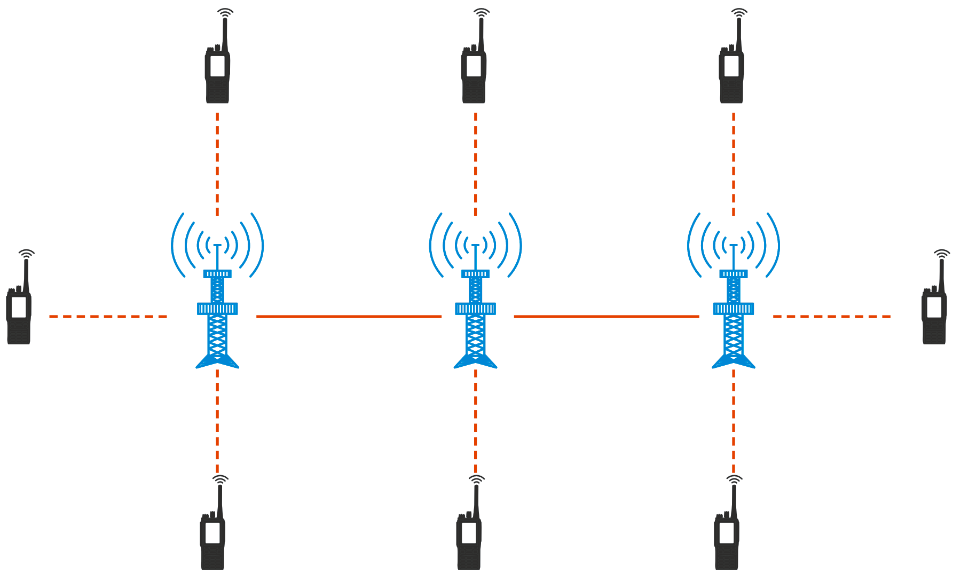
Centerless Internet Radio: The Future of Connectivity
Introduction
The internet has revolutionized how we consume media, and radio is no exception. Traditional radio broadcasting, bound by geographical limitations and centralized control, is gradually being replaced by a more dynamic, decentralized model: centerless internet radio. This emerging paradigm leverages peer-to-peer (P2P) networks, blockchain, and decentralized protocols to create a censorship-resistant, globally accessible, and community-driven audio broadcasting system.
Unlike conventional internet radio, which still relies on centralized servers and corporate gatekeepers, centerless internet radio operates without a single point of control. This shift promises greater freedom, resilience, and inclusivity in media distribution. In this article, we explore the technological foundations, benefits, challenges, and future potential of centerless internet radio as the next evolution of connectivity.
---
1. The Evolution of Radio Broadcasting
1.1 From AM/FM to Internet Radio
Radio broadcasting began with AM/FM signals, limited by range and regulatory constraints. The advent of internet radio in the late 1990s expanded accessibility, allowing stations to reach global audiences via streaming platforms. However, even internet radio remained dependent on centralized infrastructure—server farms, content delivery networks (CDNs), and corporate intermediaries.
1.2 The Rise of Decentralization
The limitations of centralized models—such as censorship, single points of failure, and high operational costs—have led to the exploration of decentralized alternatives. Technologies like blockchain, IPFS (InterPlanetary File System), and P2P networking now enable media distribution without reliance on traditional servers.
---
2. What is Centerless Internet Radio?
Centerless internet radio refers to a broadcasting model where content is distributed across a decentralized network rather than a single server. Key characteristics include:
- Peer-to-Peer Streaming: Listeners contribute bandwidth, reducing reliance on centralized servers.
- Blockchain-Based Governance: Decentralized autonomous organizations (DAOs) can manage station operations without corporate oversight.
- Censorship Resistance: No single entity can shut down a station, ensuring free speech.
- Community Ownership: Listeners and creators collectively govern content and revenue distribution.
This model aligns with the broader Web3 movement, emphasizing user sovereignty and decentralization.
---
3. Technological Foundations
3.1 Peer-to-Peer (P2P) Networking
P2P networks allow devices to communicate directly, sharing bandwidth and storage. In centerless radio, listeners act as nodes, redistributing streams to others. This reduces latency, improves scalability, and lowers hosting costs.
3.2 Blockchain and Smart Contracts
Blockchain ensures transparency in operations:
- Content Monetization: Cryptocurrencies enable microtransactions for ad-free listening or premium content.
- Royalty Distribution: Smart contracts automate payments to artists based on real-time listenership.
- Governance: DAOs let communities vote on station policies, ensuring democratic control.
3.3 Decentralized Storage (IPFS, Filecoin)
Instead of storing audio files on centralized servers, content can be distributed across decentralized storage networks like IPFS. This ensures permanence—once uploaded, files remain accessible even if the original broadcaster goes offline.
3.4 Mesh Networking for Offline Access
In regions with poor internet connectivity, mesh networks allow devices to relay broadcasts locally without needing an external connection. This enhances accessibility in remote areas.
---
4. Benefits of Centerless Internet Radio
4.1 Freedom from Censorship
Governments and corporations often restrict content based on political or commercial interests. A decentralized system makes it nearly impossible to silence dissenting voices, as no single entity controls the network.
4.2 Lower Operational Costs
By eliminating centralized servers, broadcasters save on hosting fees. P2P distribution scales organically as more listeners join, reducing bandwidth expenses.
4.3 Enhanced Listener Engagement
Community-driven stations foster deeper engagement. Listeners can:
- Vote on programming schedules.
- Tip creators directly via cryptocurrency.
- Participate in governance decisions.
4.4 Global Accessibility
Unlike terrestrial radio, centerless internet radio is not bound by geography. A station in one country can reach audiences worldwide without regulatory hurdles.
4.5 Resilience Against Downtime
Traditional streaming services suffer outages if servers fail. In a P2P model, even if some nodes go offline, the network remains operational.
---
5. Challenges and Limitations
5.1 Bandwidth and Latency Issues
P2P streaming requires sufficient upload bandwidth from listeners. In areas with slow internet, buffering and lag may occur.
5.2 Legal and Regulatory Uncertainty
Decentralized systems complicate copyright enforcement and licensing. Without intermediaries, ensuring compliance with music royalties becomes challenging.
5.3 Adoption Barriers
Most users are accustomed to centralized platforms like Spotify or YouTube. Transitioning to decentralized alternatives requires education and user-friendly interfaces.
5.4 Scalability Concerns
While P2P networks excel in small groups, scaling to millions of simultaneous listeners demands robust protocols and incentives for node participation.
---
6. The Future of Centerless Internet Radio
6.1 Integration with Web3 Ecosystems
Future platforms may integrate with decentralized identity systems (e.g., ENS), decentralized finance (DeFi) for monetization, and NFT-based ownership models for exclusive content.
6.2 AI-Powered Personalization
Decentralized AI algorithms could curate playlists based on listener preferences without harvesting personal data, addressing privacy concerns.
6.3 Hybrid Models
Some stations may combine decentralized distribution with minimal centralized oversight for legal compliance, striking a balance between freedom and regulation.
6.4 Expansion to Other Media
The principles of centerless broadcasting can extend to video, podcasts, and live events, creating a fully decentralized media landscape.
---
Conclusion
Centerless internet radio represents a paradigm shift in media distribution, prioritizing freedom, resilience, and community ownership. While challenges remain, advancements in blockchain, P2P networking, and decentralized storage are paving the way for a more open and equitable broadcasting future.
As internet infrastructure improves and decentralized technologies mature, centerless radio could become the standard, empowering creators and listeners alike. The future of connectivity is not just about faster speeds—it’s about reclaiming control from centralized gatekeepers and building a media ecosystem that truly serves the people.
---
(Word count: ~2000)
Would you like any refinements or additional details on specific sections?
Этот веб-сайт использует файлы cookie, чтобы обеспечить вам максимально эффективное использование нашего веб-сайта.
Комментарий
(0)